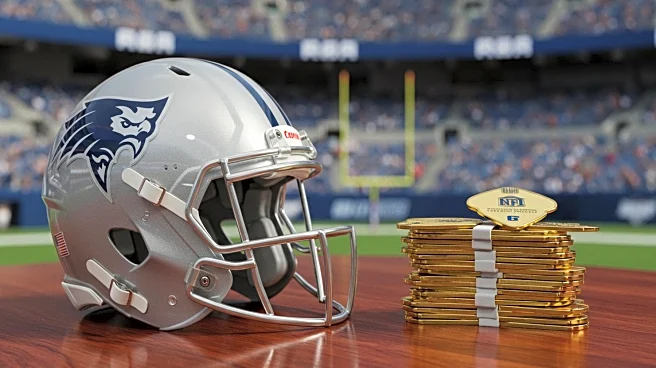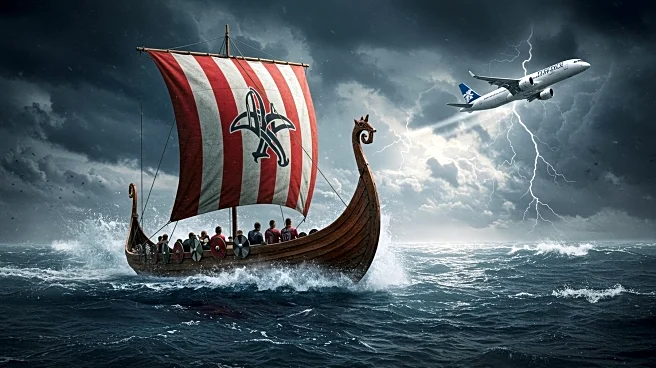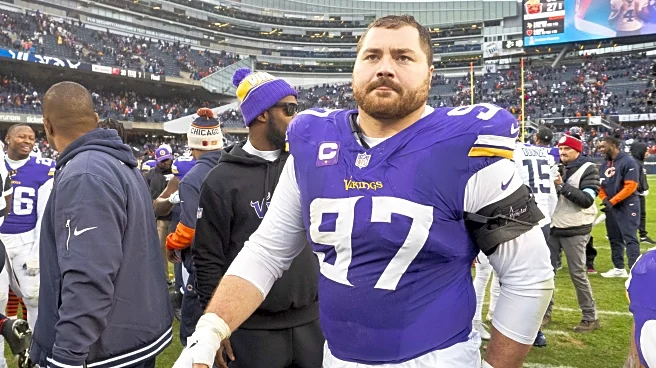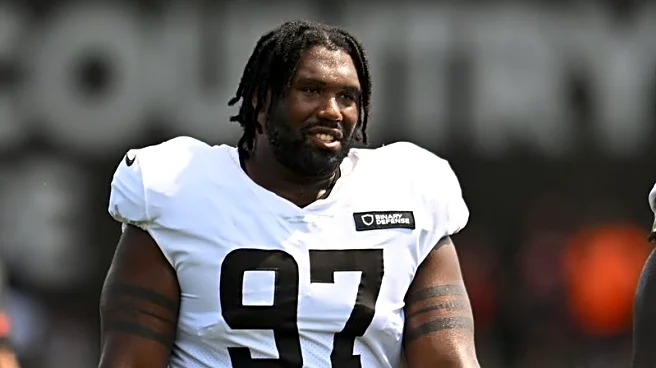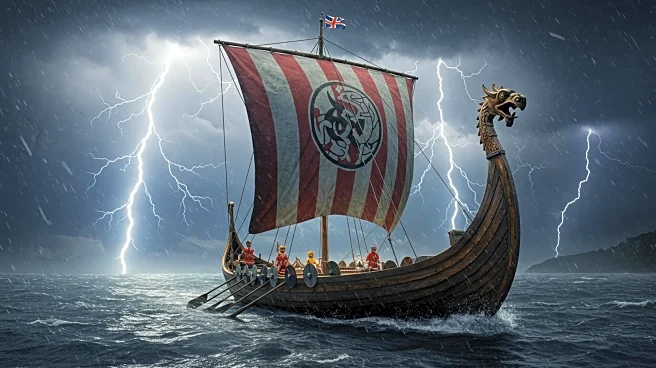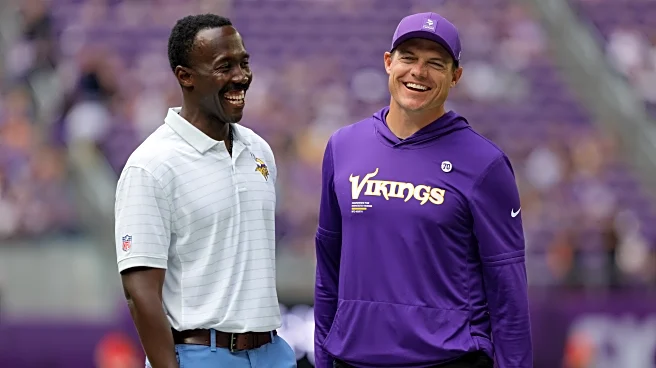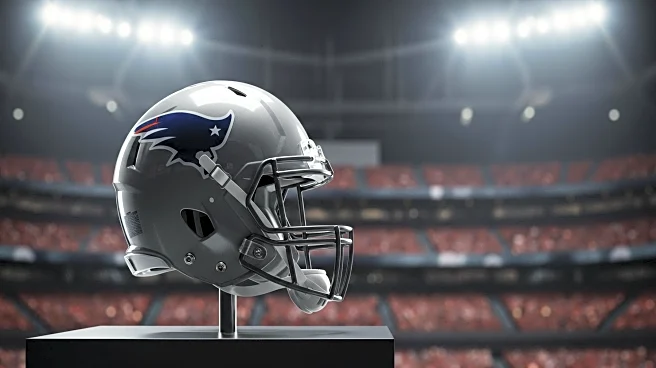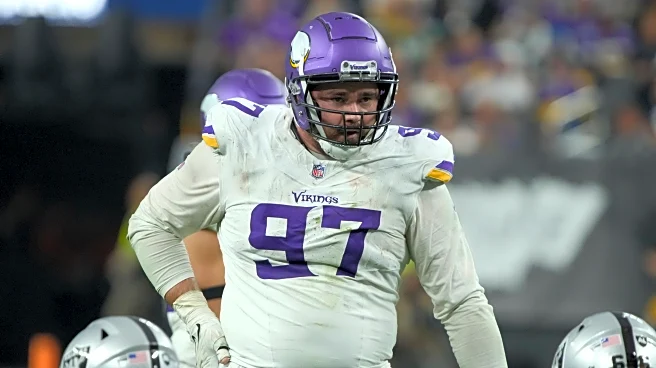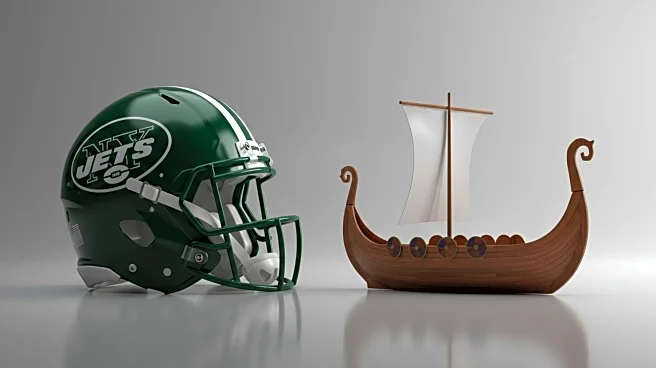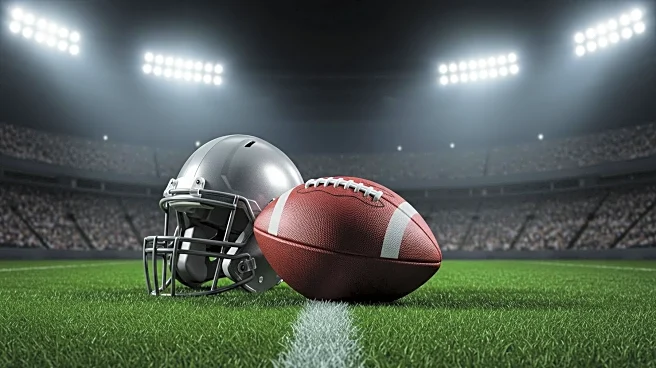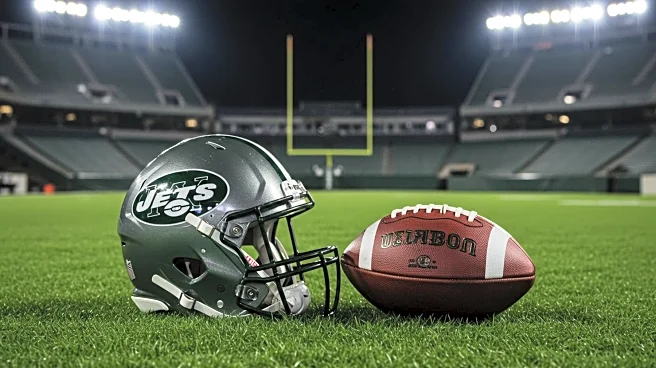What is the story about?
What's Happening?
The Minnesota Vikings have agreed to trade defensive tackle Harrison Phillips to the New York Jets. The deal involves the Jets acquiring Phillips along with a 2027 seventh-round draft pick, while the Vikings receive two sixth-round picks for 2026 and 2027. This trade comes shortly after the Vikings extended Phillips' contract, which is set to run through the 2026 season. Phillips, who joined the Vikings in 2022, has been a consistent starter and has not missed a game during his tenure. The Vikings will cover half of Phillips' $7.4 million salary for the current season, providing them with cap savings of $3.7 million for 2025 and $7.5 million for 2026.
Why It's Important?
This trade is significant for both teams involved. For the Jets, acquiring Phillips strengthens their defensive line, which was perceived as a weak spot. Phillips is expected to provide starter-level talent alongside Quinnen Williams, enhancing the team's defensive capabilities. For the Vikings, the trade allows them to save on salary cap space over the next two years, which can be strategically used for other team improvements. The move also reflects the Vikings' confidence in their current defensive lineup, having added other high-profile players in the offseason.
What's Next?
With Phillips joining the Jets, there will be increased competition for the starting positions on the defensive line. Players like Leonard Taylor and Phidarian Mathis may face challenges in securing their spots on the roster. The Vikings, on the other hand, will focus on integrating their new acquisitions and optimizing their defensive strategy for the upcoming season. Both teams will likely continue to evaluate their rosters and make adjustments as needed to enhance their performance.
Beyond the Headlines
The trade highlights the strategic maneuvers teams make to balance talent acquisition with financial management. It underscores the importance of salary cap considerations in team decisions and the impact of player trades on team dynamics. Additionally, it reflects the ongoing efforts of NFL teams to build competitive rosters through both player development and strategic trades.
AI Generated Content
Do you find this article useful?
